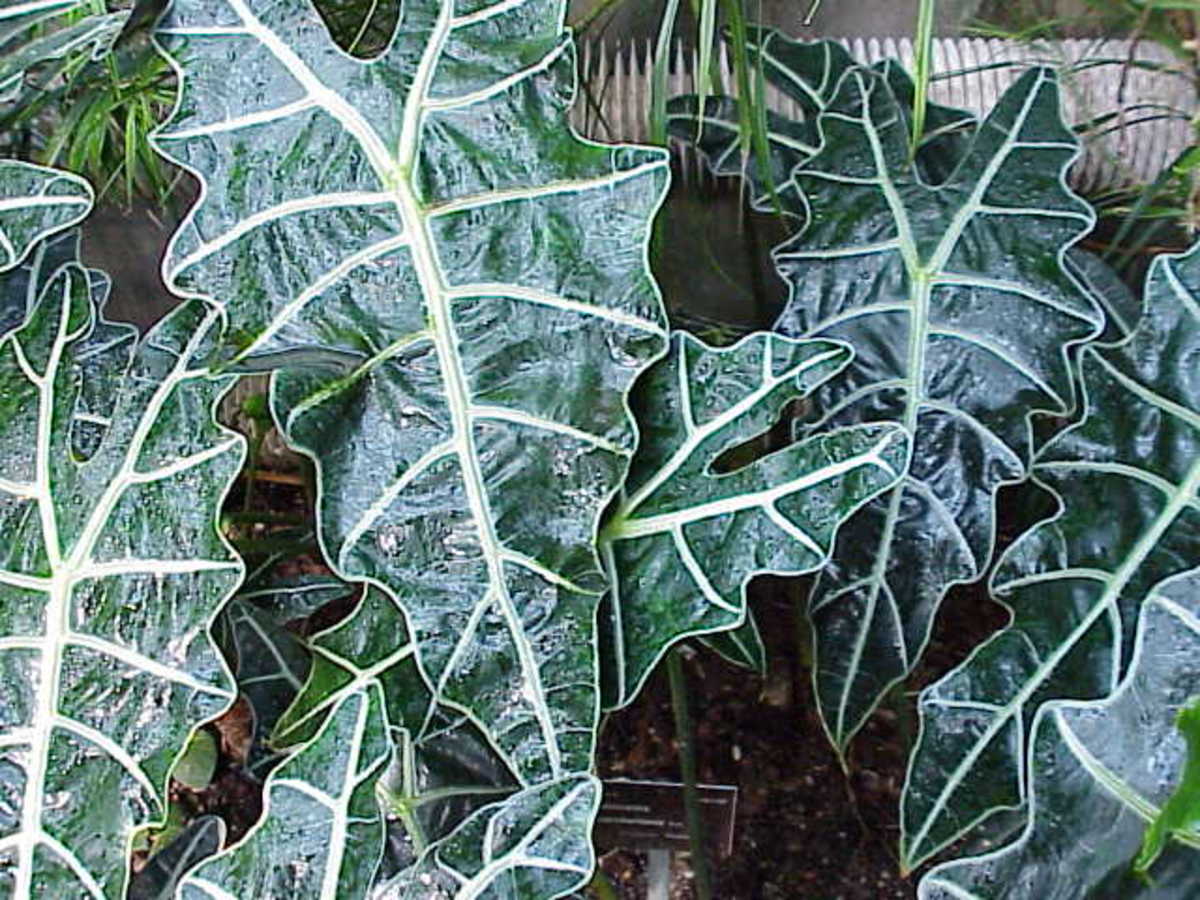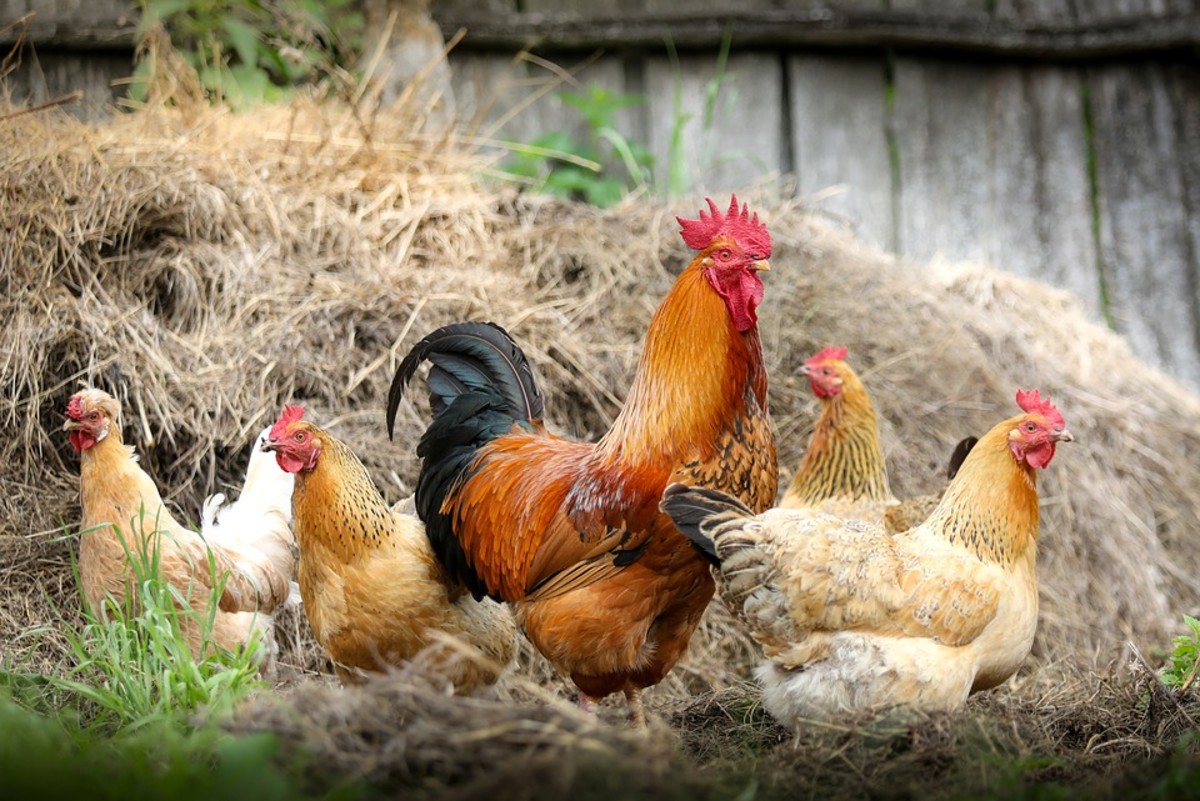Commercial Cat Food Dangers. What foods are safe for your cat.
Commercial cat food is killing your cat. What to feed your cat for a natural and healthy diet.
This article is about proper cat nutrition and the dangers of commercial cat food. I hope you learn a lot about this very important subject, and that you can start to enrich your cat or dog's life the way these sweet creatures deserve.
My knowledge is largely of cats. They are my passion and a huge part of my life. Their welfare is extremely important to me. As a fellow cat lover, I hope you care as much as I do, and can take the steps necessary to make a better life for your cat. Although I wrote this for cat owners, much of the information is important to dog owners as well.
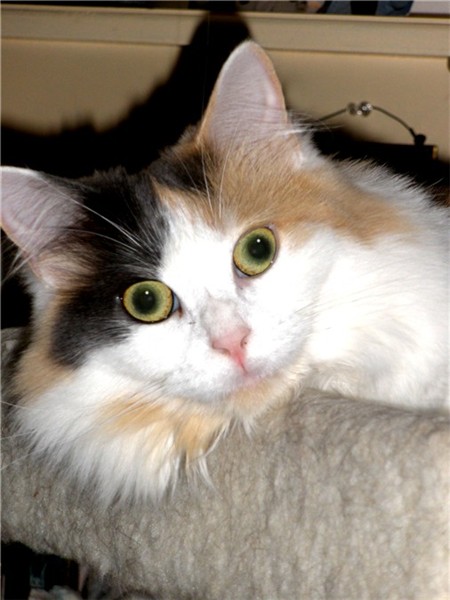
Nutrition- The foundation of health
The very foundation of health comes down to what you put into your body. Many people are aware of this and make sound nutritional choices for themselves and their families. They are aware that they need a variety of fresh, wholesome foods, unprocessed and suitable for their bodies. By suitable, I mean, you would want to feed yourselves food that fosters good health. You wouldn't assume you could live a healthy life on chips and soda would you? Then why do most people feed absolute garbage to their pets? Why are our pets fed the equivalent of nutrient deficient trash?
It isn't because our cats and dogs aren't beloved family members. We are a nation devoted to caring for and loving our pets. The majority of US households have one or more cats and dogs. I myself currently care for thirteen cats and one dog.
Sadly, most people never give a thought as to what they are putting into the bodies of their beloved pets. Without proper nutrition every system of the body will be affected and eventually start to fail until disease develops, perhaps followed by death.
Unsafe for any cat
It is a matter of lack of knowledge of the facts, which are purposely hidden from public view by clever and deceitful marketing campaigns by pet food manufacturers. Pet food is a multi-billion dollar industry in our country, and they certainly don't want the truth about the abominable and downright harmful ingredients they use coming to light for the public to see. That would cut into profits, you see, as it is all about the money.
The vast majority of pet food is severely substandard in quality and nutrients.
Did you know the pet food industry is self-regulated? That is about as useful as being unregulated. It is a case of the fox guarding the henhouse. They answer to no one and they are responsible to no one. Commercial pet food is unfit for animal consumption.
How can that be, you ask? Wouldn't my pet be dead by now if the food were that bad? Poor nutrition doesn't kill immediately, as we all know. Surely you know someone who eats a junk food diet and still "seems" to be in good health. What you don't see is what is going on inside their bodies, and the bodies of your pet. Poor nutrition takes its toll in quiet ways, ways that you may not see until your sweet pet is obviously ill. Diabetes, kidney failure, cancer, skin conditions, etc, are all caused by a combination of an incorrect and deficient diet, and other factors including over vaccination and the use of "spot" pesticide flea treatments, all of which contribute to the suppression of the immune system. Sadly, it takes a lot less time for a cat to show the signs of poor nutrition than it does for a human. Their systems are so much more delicate to the effects of a deficient diet.
Expensive poison in a can
I am not talking about store brand food, or discount cat food. These are worse than useless. What brands come to mind when you think premium cat food? I*ms? Scienc* Diet, Euk*nuba, F*ncy Feast? Well here's a shock for you. You have been brainwashed by intentional marketing campaigns designed to separate you from your money and your pet from optimal health.
If you think you have been helping your cat by feeding them these foods, you need to learn the truth. You have been paying premium prices for the same quality of food as the likes of Friskies, Nine Lives, and even the store brands. They are all absolute garbage. I*ms and Sc*ence D*et? Expensive poison.
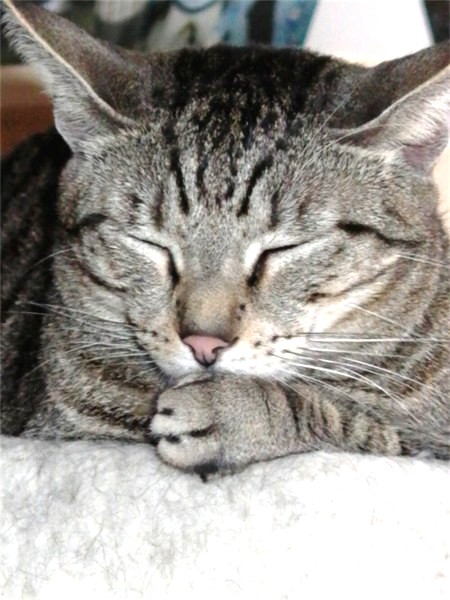
What's REALLY in that cat food?
Since when did it become okay to think that shoe leather was an acceptable ingredient in ANY food source for ANY animal? It is used in pet food under the guise of protein, and used to boost the overall protein percentage. They do this so the label can show a higher amount of protein, making the food appear to be of a better quality. Never mind that this kind of "protein" cannot be utilized by the animal at all.
Animal meal, animal by-products, animal tissue, animal fat, animal plasma-what animals exactly are these coming from? They are in all non-organic and non-holistic cat food. But what are they? Prepare to be shocked and horrified. I know I was.
What is the animal meal that makes up your cat's food? I hate to tell you that when you had to euthanize your pet because it had cancer or kidney failure or any other disease, and you left his remains at the vet for disposal, your loving companion's body was probably sold to a rendering plant. It's not always the case and not all vets do this, but many do. Some vets are not aware that the disposal companies they use to pick up the bodies of the euthanized pets are sold to rendering plants. Some assume they are buried in a landfill or incinerated. Enough are sold to rendering plants to supply the pet food manufacturers with ten tons of cats and dogs from just one small plant in Quebec per week. Per WEEK! And that is just one plant.
Euthanized companion animals (dead cats and dogs) fresh from the vet and the shelters to the rendering plant-Five MILLION dead pets a year- are sold to rendering plants to be recycled into pet food. The flea collars that may have been on the cats & dogs at death are left on and rendered along with the animal. Rendered means cooked, by the way), any and all road kill scraped up off our streets (skunks, possums, squirrels, etc.), diseased cows and horses, fecal matter, poultry feathers, and sick farm animals. Sickened yet? Read on.
Profit before quality!
Are you beginning to understand? These mega-rich pet food manufacturing companies have no interest in providing a healthy diet for your precious pet. They only care about turning toxic by-products of the human food chain and rendering plants into a profit at the expense of your fur-kid. They do NOT care about you or your pets. Meat must be "denatured" before turning it into pet food. Chemicals are used for this, including carbolic acid (a corrosive disinfectant), and creosote (used to preserve wood). According to federal meat inspection regulations, fuel oil, kerosene, carbolic acid, and citronella are all approved denaturing agents. This is beyond horrifying to me.
Slaughterhouse animals too sick to go into the human food chain, spoiled meat from grocery stores (along with the plastic and Styrofoam trays they are packed in) along with all the hormones, insecticides, steroids, and antibiotics used to treat these cows and other 4-D animals. (dead, diseased, dying, and disabled). This is what is in the commercial cat and dog) food you may be feeding your pet, not to mention totally toxic flea and tick collars and the sodium pentobarbital used on euthanized pets. Would you eat these? Then why would you feed them to your cat?
Fat stabilizers are also added to the chemical brew. BHA, and BHT are both known to cause liver and kidney dysfunction, along with ethoxyquin, a known carcinogen.
Oh I know, the marketing campaigns are so clever. They show happy cats begging for their bowl of dry, crunchy poison. They portray happy cats gleefully leaping in a garden of flowers dreaming of delicious whole tender tuna and chicken. Problem is, there isn't any of usable quality in their bowls, only the remains and renderings of God knows what.
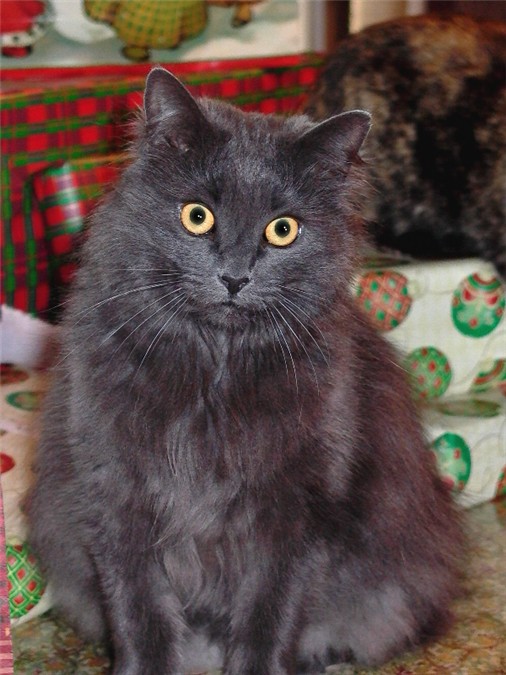
The Pet Food Recall of 2007- Menu Foods Poisons & Kills Thousands!
"But, the labels show the food I buy is high in protein" you say. I hear you, but "protein" as we have already mentioned, can be pretty much anything. Just because it states a certain amount of protein is in the food, does not mean its is usable protein. Remember in early 2007 when Menu Foods had the POISONED PET FOOD? And thousands and thousands of pets died after eating food produced by Menu Foods. (The real numbers of dead and sick pets were purposely kept quiet so as not to damage their reputation further.)
Menu Foods produces pet food for MANY labels and companies. My best friend's three sweet kitties all got deathly ill, and one poor angel died, after being feed IAMS cat food purchased from Wal-Mart. Iams is made by Menu Foods.
Menu Foods allowed "melamine" imported from China into the production of its cat and dog foods (and we all know just how "safe" their health and safety standards are!). Melamine was added to boost the PROTEIN content of the label. I don't know about you, but I have dishes made of melamine. I didn't know it was an edible product. News flash- it isn't! But it was allowed in because the large, multinational pet food companies just don't care. By the way, a class action lawsuit was filed against Menu Foods and recently settled for a few million. A few million dollars to be shared by thousands of people who poisoned their own pets with tainted food they probably paid a premium price for. How sad is that?
Just say NO to GRAINS!
Back to the protein in cat food. Here is something you probably do not know. Cats are obligate carnivores. What this means is, they are designed to eat meat protein. Not corn, rice, wheat, and for God's sake, not SOY! When did you last see a cat outside eating an ear of corn, or a stalk or wheat, or some soybeans? Never? Right. That's because they are not designed to eat these grains!
But aren't grains healthy? Some whole grains are healthy for HUMAN beings. NO grains are healthy for the feline species. Besides, they don't use whole grains in cat food. Rice? White rice causes insulin levels to be high, resulting in diabetes. "Brewers rice" is usually the swept up floor waste from the brewery industry. Peanut shells, (called cellulose on pet food labels), rice husks, these are more "grains" and "protein" sources. Yummy.
Ditch the KIBBLE!
Ditch the dry commercial cat food, which is as bad as canned and has a whole other set of problems associated with it. Dry food is mostly inferior grains with some animal fat and by-products thrown in, as well as artificial flavors meant to entice your cat. It is possible that there is NO meat in the food at all. Food allergies are very common in kibble eaters.
In short, dry food (kibble) fed regularly, creates kidney and urinary track health issues. It simply does not have enough moisture content to supply the kidneys with the necessary liquid it needs. This creates a hardship on the kidneys and can also contribute to cystitis, and urinary track blockages, which in a male cat can turn deadly in a matter of hours.
Cats have evolved from desert dwellers and are designed to get the majority of their water needs met through their food. Canned and fresh meat supply this nicely, but dry food does not. Cats, as you may notice, do not drink much water, thus they need to get their hydration from their food. Feeding your cat all dry food is like you trying to live on nothing but potato chips. How well do you think you would feel?
For some wonderful information on this subject, see Lisa Pierson's website and see why although you think your cat is doing just fine on their kibble diet, they really are not.
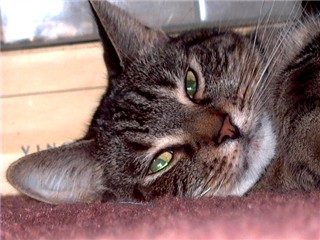
WHY Grains are SO BAD for CATS!
Grains are a very cheap source of protein and are the main ingredient in most commercial pet foods. Go read the label on your can of Friskies or your bag of Meow Mix. Is the first ingredient a grain or a by-product? You BET it is! That is because it is a cheap source of protein, and not only completely useless to your cat, but absolutely harmful to its health. Grains in cat food are a major cause of diabetes, kidney failure, thyroid problems ( Soy suppresses thyroid function. You shouldn't eat it either! ), cancer, liver failure, heart disease and dental problems. Does your cat have any of these conditions yet? Chances are almost certain that they will, if they don't yet.
Grains are a HUGE no-no for cats. They are without question the number one cause of obesity in cats, which leads to diabetes, which leads to daily insulin shots, and a lot of expense. When you stop feeding cats grains and junky commercial foods, watch how they look and you can tell they feel better. There will be far less stool, so much less that you may wonder if something is wrong. No, something is right! They produce less bodily waste because so much less garbage is going into them. You may see a larger amount of urine deposits in the litter box, as their kidneys are getting much more liquid from a proper canned (or raw food ) diet. Less stool, more urine is healthier.
I'll tell you about some grain free cat food options a little later on.
Clueless vets offer poor nutritional advice
I know what some of you are asking. "Why didn't my vet tell me all of this? Why does my vet recommend Iams or Science Diet?" Because he or she simply doesn't know any better. They are as duped by the pet food industry as the rest of us. "But didn't my vet learn about this in veterinary college? Didn't they learn about nutrition?'
The shocking answer is no, they didn't learn about nutrition in their schooling. They did not learn disease prevention. They did not learn how to keep an animal healthy. What they did learn is how to treat illness and disease. God bless them for that, but it is a great disservice to themselves and the millions of pet owners across the country. Nutrition is an ELECTIVE course in veterinary college. And, when chosen, it is a short, few hour course. It is basically useless in teaching our vets how to help us help our pets.
Guess who supplies the "teaching" material for those rare nutrition classes? If you guessed the pet food industry, you are right. This is another case of the fox guarding the henhouse. A lot of heavy marketing aimed at veterinary practices is done to promote unhealthy Iams and Science Diet type foods.
It's a sad situation, but suffice to say, your veterinarian is probably not informed enough to tell you how to safely and properly feed your cat or dog. Some may be knowledgeable, but if you ask for a recommendation and they advise you to feed any of the commercially available pet foods found in a grocery store, stop asking; they don't know anything about nutrition and are causing harm to your pet. Better yet, find a Holistic vet. I did!
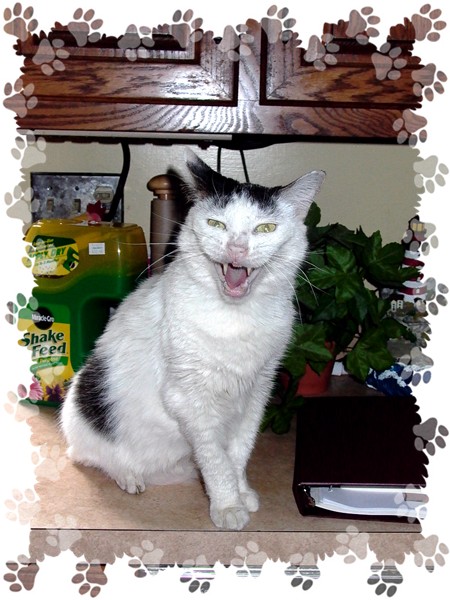
The benefits of a species appropriate diet
A healthy cat (or dog) fed a proper, species appropriate diet will rarely need to see the doctor. Diabetes, kidney failure, or cancer just don't happen as much with a properly fed cat. I will include a whole list of great cat foods for you below. You may think that it is going to cost a fortune to feed these foods; compared to the .37 cents a can you spend now. So maybe a 5.5 oz can of a better food may cost you $1.20. I can tell you from many years of experience and with many cats, the savings in vet bills make up for it a thousand times over.
As a side benefit, the food may cost a little more, but they tend to eat less as their nutritional needs are actually being met and their appetites are not thrown out of wack from the excess carbohydrates and additives.
In the past, when I fed a poor diet, vet visits were a common thing. At no less than a hundred bucks a pop, they added up! Especially if you have more than one cat, and I always have had multiples. A few hundred dollars a visit is not unheard of. A urinary blockage (which is always a medical emergency) can cost close to $1000 to treat if surgery is involved. Wouldn't you rather avoid that situation? A proper diet can eliminate or at the very least greatly reduce many health problems your cat may encounter as a result of feeding it grain filled garbage.
Life saving books for your cat
So you can read more about the pet food industry, let me tell you about the book that opened my eyes to all of this several years ago. It can explain this all much better than I can and in a lot more detail. I loaned my copy to my friend, whose sweet baby cat Gizmo was poisoned by the tainted Iams cat food. She has also been a great advocate for spreading the word about these pet foods, in spite of the pain she felt over Gizmo's untimely and preventable death. Her two other cats survived the poisoning, and slowly recovered. She now feeds them only grain free holistic canned food, which I told her about. She will never feed them commercial pet food again. Had she fed them what the vet recommended after their poisoning, they would likely both have died. He suggested the Sci*nce Diet KD- the diet supposedly designed for kidney patients, as it is lower in protein.
Check out:
Foods Pets Die For, by Ann Martin. Available at Amazon.com
Another book I highly recommend, not only for the chapters on feeding, but for overall holistic health care for cats is:
"Whole Health for Happy Cats", by Sandy Arora. Available at Amazon.com
Safe and Natural Cat Food Options
So now you know what not to feed. What are your options? A raw food diet is the ideal for most cats, but this is a detailed and complicated subject that is best left to the experts to explain to you. You can learn more about raw diets for cats at the following places:
Raw Food Diet for Cat
Just remember one thing, cats in the wild do not barbeque their mice, do not fry their birds, and do not sauté their chipmunks. All prey is eaten raw, as nature intended. Your little tiger is no different on the inside from their larger cousins.
Nature does know best when it comes to feeding your pets, but if you are not ready to make a commitment to raw feeding, or time and money do not allow it, please continue reading to learn the best canned food options. 90% of my many cat's diet is a home prepared raw diet.
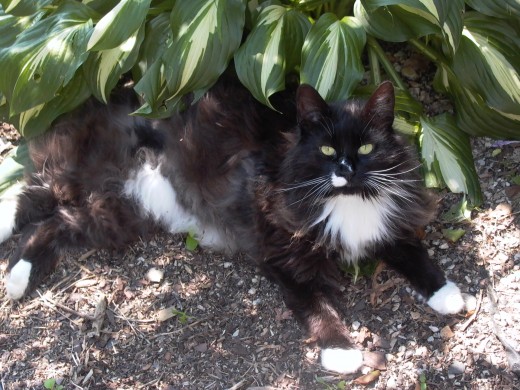
Grain Free canned foods
There are a variety of grain free canned food options available for your cat. Grain free foods do usually have a variety of vegetables and fruits in them, which while are not necessarily optimal, they are a far better choice than grains. Sweet potatoes are a common ingredient, as are peas in some foods. They do increase the carb count however and this is a serious health concern.
Most of these types of foods cannot be found in the usual pet supply stores, although sometimes you can find a couple. Mostly these foods can be found in holistic or natural themed pet stores, which thankfully are becoming more and more prevalent. They can even be ordered online at a large number of retailers.
My favorite place for ordering canned cat food online is Chewy.com
www.chewy.com
Grain Free canned foods
Wellness cat food, is a complete diet for cats, with low carbohydrate content. They offer the very small 3 oz cans, 5.5 and 12.5 oz cans. Get the Grain FREE flavors with no fish.
Some flavors do have grains, in the form of rice, so beware of these. The one's I feed are the Turkey, Chicken, Chicken and Beef. There are some with some fish mixed in with turkey or chicken that are also grain free, but I go very lightly with fish feeding to my cats. Fish is strongly flavored and can get cats "addicted" so that they may refuse other non-fish foods. Too much fish can also cause a painful condition known as steatosis.
One of the most prevailing diseases afflicting "fish junkies" is Steatosis or Yellow Fat Disease, an inflammation of the fat tissue in the body due to a deficiency of vitamin E. A vitamin E deficiency is usually the result of feeding tuna, or any canned fish, packed in vegetable oil. These products are high in polyunsaturated fatty acids which oxidate vitamin E, besides being a poor source of vitamin E to begin with.
As long as fish is a very small part of your cat's diet, it should not be a problem.
In addition to Wellness, another highly recommended food is Natures Variety. Because I have so may cats, and Nature's Variety only comes in the smaller size cans, I only buy this as an occasional treat. It is a bit more costly when feeding many cats. Only a few of my cats eat any canned food, the rest eat raw.
EVO by Natura Pet is another wonderful grain free canned food that comes in 5.5 and 12.5 oz cans. Get the 95% meat flavors that are grain free.
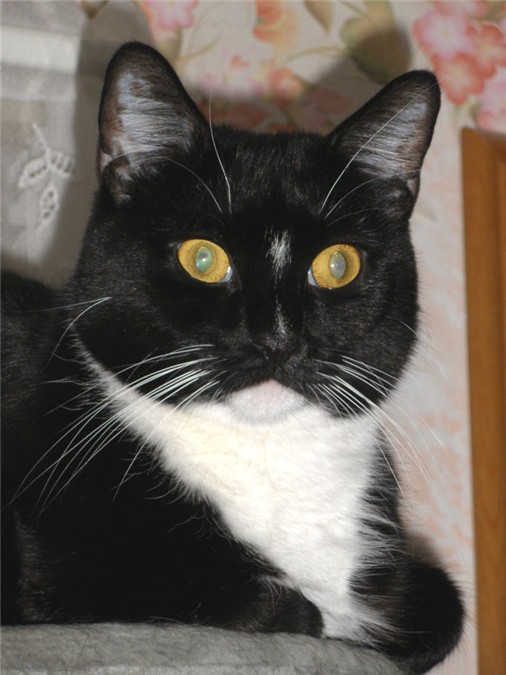
Merrick, Wellness and more
Merrick is another fine product that my cats just love. Although it does come only in the smaller sized cans, I do buy it by the case as it is a little less costly than Evo and Nature's Variety. Pet Supplies Plus does carry Merrick and Wellness, as well as a few other quality cat foods. I applaud them for this effort.
I had one sale girl tell me she actually tasted the "Grammies Pot Pie " and it wasn't bad. I don't advise that, but it was kind of funny. Merrick's cat foods do look and smell like something that could be eaten by people.
Some of Merrick's flavors do use a lot of fish and some do have rice, so read the labels. I use the Merrick Perfect Bistro chicken, turkey,and duck.
More grain free options include Nature's Balance (makes a nice venison and green pea canned food), Avoderm, Nature's Logic, Fromm, By Nature Organics, and Ziwipeak from New Zealand.
Final Thoughts
Chewy.com online carries a vast amount of these healthy foods, as well as a huge amount of holistic and natural selection of products for your cat or dog. I have ordered from them for several years and they are fantastic!
If circumstances prevent you from feeding a grain free canned diet, at least please consider a high quality canned that does have grains. These are not ideal, but they are a far better cry than commercial pet foods. I have fed some of these in the past myself. These tend to be a little cheaper sometimes (but not necessarily) and often are easier to find.
Weruva is a fairly new food to the market. It looks good enough for you or I to eat! Seriously, check out the pictures of the food on their site. I used this as a special food when one of my boys was terminally ill with cancer, and it is one of the few foods he scarfed down, sick as he was. Some flavors are all fish, and some have rice, but many are chicken and some are beef. These come in 3 oz and 5.5 oz cans, but are fairly pricey and may be best used if you only have one or two cats if money is an issue. It seems to be available in a large variety of stores, as indicated on the store locator on their website.
I am sure there are lots more quality canned foods I am overlooking, but if you visit Chewy.com website, you can find more that I didn't include here. They are good about providing all the nutritional information you need, as well as the ingredients in the foods.
As I conclude this article I want to link you to one more great site I found. This is a blog written on cat nutrition, and the author is as passionate on this subject as I am. She has lots of good articles are reference material. Check her out.
And, some Great cat health advice can be found at www.catcentric.org
I hope that my article has served to open your eyes about the pet food industry and that you will go give your kitties a big hug and a kiss and reevaluate your cat food choices. Any cat lovers know, our babies are worth it!
Take care.
Lover cats
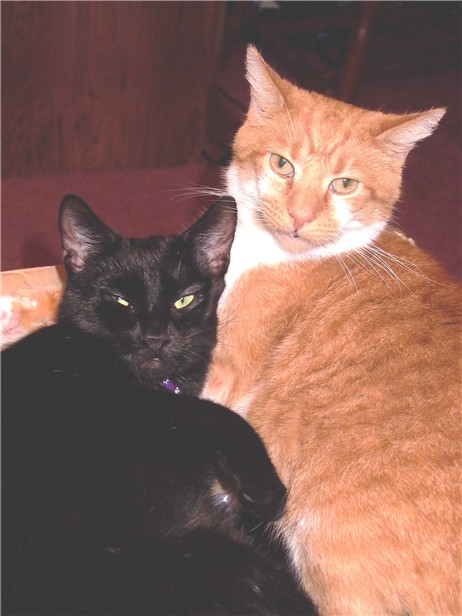
Why does my cat like apple turnovers?
I have heard some people ask that if grains are so bad for cats, why do they eat grass? Several possibilities: 1.) Cats often eat grass to induce vomiting if they have an upset stomach. 2.)Maybe they like the taste. 3.) Maybe an instinctual need to get some nutrient they are missing from their nutrient devoid commercial food.
Think about it; don't YOU eat foods that aren't good for you simply because they taste good? Sure you do. So maybe your cat does too.
I once had one of my kitties mug me for a Pepperidge Farm apple turnover. She ripped it right out of my hand with her little teeth. Was this good for her? Of course not, and I am not even sure why she would want it, except I have noticed most animals do have a sweet tooth.
My mom has a cat who loves peas. She hand feeds them to him. 20 years ago I had some cats that would fight for the leftover corn cobs from my Kentucky Fried Chicken dinner.
So, you just never know what a cat may LIKE to eat- but that doesn't mean you SHOULD feed it to them.




